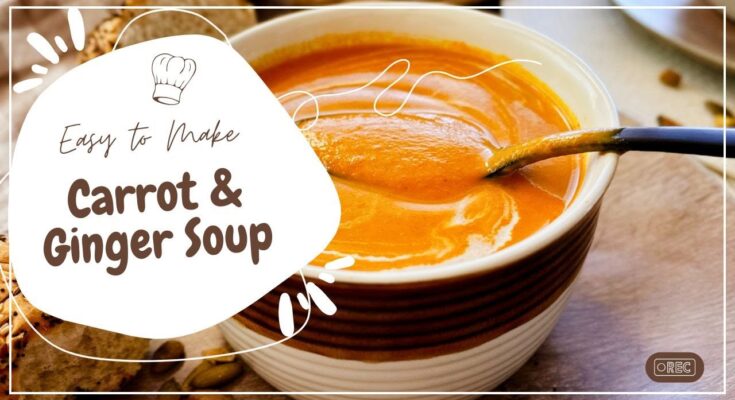Chana Dal Recipe: Chana Dal, also known as Bengal Gram Dal, is one of the most widely used lentils in Indian households. It is made from split and polished black chickpeas, giving it a slightly nutty flavor and a firm texture. Unlike other lentils, Chana Dal holds its shape well after cooking, which makes it a versatile ingredient in soups, curries, snacks, and even desserts. This humble lentil isn’t just about taste—it’s deeply connected with tradition, nutrition, and daily Indian cooking practices.
When you think of Chana Dal, imagine a golden bowl of comfort—warm, hearty, and satisfying. It’s not just another dal on the Indian menu; it’s a staple that bridges generations. From grandmothers preparing it with ghee and spices to modern households cooking it quickly in an Instant Pot, Chana Dal continues to be a timeless dish.
Why Chana Dal is a Staple in Indian Kitchens
Every Indian household has its own version of Chana Dal. In some homes, it’s spiced up with garlic and onions, while in others, it’s kept simple for religious offerings. Its ability to blend with a variety of flavors—tangy tamarind, creamy coconut, or earthy ghee—makes it an all-time favorite. Beyond taste, Chana Dal is budget-friendly, easy to store, and packed with nutrients, making it a practical choice for everyday meals.
It is also a flexible ingredient. You’ll find it used in South Indian vadas (savory fritters), Gujarati farsan (snacks), and even Bengali festive meals. No matter where you travel in India, you’ll encounter Chana Dal in some form, highlighting its cultural significance.
Health Benefits of Chana Dal
Apart from taste and tradition, Chana Dal is a powerhouse of health benefits. It’s loaded with protein, making it a great option for vegetarians and vegans. Its high fiber content helps with digestion and keeps you fuller for longer, making it excellent for weight management. The low glycemic index of Chana Dal makes it suitable for diabetics, as it helps control blood sugar levels.
Additionally, it is rich in iron, folate, and other essential vitamins that support overall health. If you’re someone looking for a wholesome, protein-packed, and affordable food, Chana Dal easily fits the bill. That’s why it’s not just a recipe—it’s a healthy lifestyle choice.
Ingredients You’ll Need
Core Ingredients
The beauty of Chana Dal lies in its simplicity. To prepare a flavorful bowl of Chana Dal, you’ll need:
- 1 cup Chana Dal (Bengal Gram)
- 3 cups water
- 1 medium onion, finely chopped
- 2 medium tomatoes, chopped
- 2-3 green chilies, slit
- 1 tablespoon ginger-garlic paste
- 1 teaspoon turmeric powder
- 1 teaspoon red chili powder
- 1 teaspoon cumin seeds
- 1 teaspoon garam masala
- 2 tablespoons oil or ghee
- Salt to taste
- Fresh coriander leaves for garnish
These ingredients form the backbone of most Chana Dal recipes. The combination of earthy lentils, tangy tomatoes, and aromatic spices creates a balanced dish that pairs beautifully with rice or roti.
Optional Add-ons for Extra Flavor
To enhance the flavor, you can include:
- Curry leaves (for a South Indian touch)
- Dry red chilies (for extra heat)
- A pinch of asafoetida (hing) for digestion
- Lemon juice (for a refreshing tang)
- Coconut milk or grated coconut (for richness)
- A dollop of butter or cream (for indulgence)
These add-ons aren’t mandatory, but they help customize the dish based on your taste preferences.
Substitutions and Variations
Not everyone has access to the exact ingredients, so substitutions come in handy:
- Replace fresh tomatoes with canned tomatoes or tomato puree.
- Use olive oil or vegetable oil if ghee isn’t available.
- Swap green chilies with red chili flakes.
- For a vegan version, skip ghee and use coconut oil instead.
This flexibility ensures that Chana Dal can be prepared in any kitchen around the world without losing its essence.
Preparing Chana Dal
How to Wash and Soak Dal Properly
Washing and soaking are crucial steps before cooking Chana Dal. Rinse the dal under running water at least 3–4 times until the water runs clear. This removes excess starch and prevents foaming while cooking.
Next, soak the dal in water for at least 30 minutes to 1 hour. Soaking softens the lentils, reduces cooking time, and enhances digestibility. If you’re in a hurry, you can skip soaking, but the dal will take longer to cook and may not turn out as soft.
Cooking Chana Dal in Pressure Cooker or Instant Pot
The traditional way of cooking Chana Dal is in a stovetop pressure cooker. Add soaked dal with 3 cups of water, turmeric, and a pinch of salt. Cook for 3–4 whistles until the dal is soft but not mushy.
If using an Instant Pot, set it on Pressure Cook mode for 8–10 minutes, followed by natural pressure release. The Instant Pot ensures consistent results and is especially helpful for beginners.
Tips to Get the Perfect Texture
- Don’t overcook the dal—it should hold shape but still be tender.
- For a creamier texture, mash a portion of the cooked dal with the back of a spoon and mix it back in.
- If dal is too thick, add warm water and simmer. If too runny, cook uncovered for a few extra minutes.
The goal is to achieve a hearty yet comforting consistency that pairs well with rice or roti.
Step-by-Step Cooking Guide
Step 1 – Preparing the Base Masala
Start by heating oil or ghee in a deep pan. Add cumin seeds, let them splutter, then add chopped onions. Sauté until golden brown. Next, add ginger-garlic paste and green chilies. Fry until the raw smell disappears.
Now, add chopped tomatoes along with turmeric and chili powder. Cook until the tomatoes soften and release oil. This masala forms the heart of the dal—it’s where all the flavor is built. A well-cooked masala ensures that the dal is aromatic, rich, and flavorful.
Step 2 – Cooking the Dal with Spices
Once your masala is fragrant and the tomatoes have turned mushy, it’s time to introduce the cooked chana dal. Pour the boiled dal into the pan along with the water it was cooked in. Stir well to combine the dal and masala, ensuring no lumps of spices remain. This step is where the earthy flavor of lentils meets the rich spice base, creating the soul of the dish.
Sprinkle in garam masala and adjust salt as needed. Let it simmer on a medium flame for at least 10–15 minutes. Simmering is essential because it allows the flavors to meld together. The longer it sits on a low flame, the deeper the taste becomes. Some people even let the dal rest for a few hours before reheating, as the flavors intensify beautifully over time.
If you want a slightly tangy taste, you can add a splash of lemon juice or a teaspoon of tamarind paste at this stage. For a richer touch, a tablespoon of cream or butter stirred in right before serving elevates the dish.
Step 3 – Blending Masala and Dal Together
This stage is all about achieving harmony. You don’t want the dal too watery or too thick—it should have a velvety, spoon-coating consistency. Stir continuously while simmering so the masala blends seamlessly into the lentils.
For a restaurant-style texture, use a ladle to mash a small portion of the dal against the side of the pan. This thickens the gravy naturally without adding cornstarch or cream. At the same time, keep most of the lentils intact to maintain that hearty bite.
Remember, balance is key. A good chana dal should be flavorful yet light, creamy yet wholesome.
Step 4 – Adjusting Consistency and Seasoning
Now that the dal and masala are well combined, check the consistency. If it feels too thick, add some hot water and simmer for a couple of minutes. If it feels too runny, let it cook uncovered until the excess liquid evaporates.
This is also the stage to fine-tune seasoning. Taste the dal—does it need more salt, a dash of chili powder, or maybe a little extra tang? Cooking is as much about instinct as it is about technique, so trust your taste buds.
Finally, garnish with freshly chopped coriander leaves for a burst of freshness. This finishing touch not only enhances the flavor but also makes the dish visually appealing.
Tempering (Tadka) for Chana Dal
What is Tadka and Why It Matters
Tadka, also known as tempering, is a signature step in Indian cooking. It involves frying whole spices and aromatics in hot oil or ghee and then pouring this sizzling mixture over the cooked dal. The result? A flavor explosion that instantly transforms the dish.
Think of tadka as the magic wand of Indian cuisine. Even a plain dal comes alive with a tempering of cumin, garlic, and chilies. It adds layers of depth, aroma, and texture that can’t be achieved otherwise.
Traditional Ingredients for Tadka
A classic tadka for chana dal includes:
- 1 tablespoon ghee or oil
- 1 teaspoon cumin seeds
- 2–3 garlic cloves, sliced
- 1–2 dry red chilies
- A pinch of asafoetida (hing)
- Fresh curry leaves (optional)
Heat the ghee until it shimmers, add cumin seeds, and let them crackle. Toss in garlic, dry chilies, and hing, frying until golden and aromatic. Immediately pour this hot tadka over your simmering dal. The sizzling sound and irresistible aroma will make your kitchen smell heavenly.
Creative Variations of Tadka
While the traditional version never disappoints, you can experiment with tadka to suit your taste:
- Use mustard seeds and curry leaves for a South Indian touch.
- Add onions and green chilies for a richer base.
- Try fennel seeds for a slightly sweet, aromatic flavor.
- For a smoky twist, finish the dal with a dollop of ghee tempered with Kashmiri red chili powder.
Each variation brings something new to the table, keeping this classic dish exciting and versatile.
Serving Suggestions
Best Accompaniments for Chana Dal
Chana dal is incredibly versatile when it comes to pairings. The most traditional combination is dal with steamed basmati rice—a comforting, soul-satisfying meal. Pair it with a dollop of ghee on top, and you’ll understand why it’s considered comfort food in many Indian homes.
For a lighter option, serve chana dal with chapati, paratha, or naan. The slightly chewy bread complements the creamy dal beautifully. You can also serve it with jeera rice or pulao for a festive spread.
How to Serve for Everyday Meals
On a regular day, keep it simple. Serve dal with rice, roti, and maybe a side of pickle or papad. A small salad of cucumber, onion, and lemon adds freshness to the meal. This kind of wholesome, balanced plate is not only tasty but also nourishing.
Serving Ideas for Special Occasions
If you’re cooking for guests or a festive occasion, elevate your chana dal by pairing it with:
- Jeera rice or saffron pulao
- Paneer dishes like shahi paneer or palak paneer
- A dry sabzi such as aloo gobi or bhindi masala
- Sweet treats like gulab jamun or kheer for dessert
A well-presented bowl of chana dal garnished with coriander leaves, a drizzle of ghee, and a side of freshly made bread can steal the spotlight at any dinner table.
Storage and Reheating Tips
How Long Chana Dal Lasts in the Fridge
Freshly cooked chana dal tastes best on the day it’s made, but it stores well for later use too. You can refrigerate it in an airtight container for 3–4 days. The key is to cool it completely before storing; sealing hot dal in a container can cause condensation, leading to spoilage.
When you reheat it, you’ll notice the dal thickens as it cools. That’s normal since lentils absorb liquid over time. Simply add a splash of warm water or vegetable stock while reheating to restore its original consistency.
Freezing Tips for Longer Shelf Life
If you want to store dal for longer, freezing is the way to go. Cooked chana dal freezes beautifully for up to 2–3 months. Divide it into meal-sized portions, let it cool, and then transfer into freezer-safe bags or containers.
To thaw, shift the container to the fridge overnight. When ready to eat, reheat on the stovetop with a little extra water. Avoid microwaving directly from frozen, as it may affect texture.
Best Way to Reheat Without Losing Flavor
The stovetop method is the best for reheating chana dal. Heat it gently over medium flame, adding water to loosen the texture. Stir often to avoid sticking to the bottom. If you’re short on time, reheating in the microwave works too—just cover it with a lid and stir halfway through.
A pro tip: add a quick fresh tadka when reheating. It revives the aroma and gives your leftover dal a “just-cooked” feel.
Nutritional Profile of Chana Dal
Calories and Macronutrients
A single serving of cooked chana dal (about 1 cup) provides:
- Calories: ~180
- Protein: 10–12g
- Carbohydrates: 30–32g
- Fiber: 8–10g
- Fat: 3–4g
This balance of macronutrients makes it a wholesome choice for both vegetarians and non-vegetarians looking to increase protein intake.
Rich in Fiber and Protein
Chana dal is a powerhouse when it comes to fiber and protein. The high fiber content supports healthy digestion, prevents constipation, and keeps you full for longer. This makes it an excellent food for weight control.
Meanwhile, its plant-based protein makes it a favorite among vegetarians and vegans. Unlike animal protein, it’s low in fat yet equally nourishing. Pair it with rice or roti, and you’ve got a complete protein-packed meal.
Benefits for Weight Management and Digestion
Because of its low glycemic index, chana dal releases energy slowly into the bloodstream, preventing sudden spikes in blood sugar. This makes it diabetic-friendly. It also helps reduce cravings, which is crucial for weight loss.
Moreover, being rich in iron and folate, it combats fatigue and boosts energy levels. If you’re aiming for a diet that’s filling, nutrient-rich, and budget-friendly, chana dal checks all the boxes.
Variations of Chana Dal Recipes
Bengali Chana Dal with Coconut
In Bengali households, chana dal often appears during festive meals. Their version includes grated coconut, bay leaves, and a touch of ghee. The subtle sweetness of coconut balances beautifully with the earthy lentils. Often served with luchi (deep-fried bread) or pulao, it’s a festive delicacy.
Gujarati Sweet and Spicy Chana Dal
The Gujarati style of cooking chana dal is unique—it combines sweet and savory flavors. Jaggery (gur) is added along with spices like mustard seeds, curry leaves, and hing. The result is a dal that’s mildly sweet, tangy, and spicy all at once. It pairs well with steamed rice or the famous Gujarati khichdi.
Maharashtrian Style Chana Dal Amti
In Maharashtra, chana dal is transformed into “Amti.” It’s flavored with tamarind, goda masala (a traditional spice blend), and jaggery. This dish has a tangy-sweet taste profile and is often served with steamed rice and papad. It’s simple yet comforting, perfect for everyday meals.
Pro Tips for Perfect Chana Dal Every Time
Balancing Spices for Flavor
The magic of chana dal lies in its seasoning. Too little spice makes it bland, while too much overpowers the natural nuttiness of the lentils. Always start with basic spices—turmeric, chili powder, cumin—and build flavor gradually. If you’re unsure, add less initially and adjust after tasting.
How to Fix Overcooked or Undercooked Dal
- Overcooked dal: If it turns mushy, don’t panic. Use it as a base for dal soup or thicken it with a tadka and serve with bread.
- Undercooked dal: If the grains are still hard, add more hot water and simmer until tender. Alternatively, pressure cook for another whistle or two.
Making it Richer with Ghee or Butter
A spoonful of ghee or butter added just before serving makes a world of difference. It enhances aroma, adds richness, and gives the dal a restaurant-style taste. If you’re health-conscious, you can use olive oil, but for traditional flavor, ghee is unbeatable.
Common Mistakes to Avoid
Not Soaking the Dal Properly
Skipping the soaking step is one of the biggest mistakes. While you can cook dal without soaking, it will take much longer and might not achieve the desired softness. Soaking also improves digestibility, making it easier on the stomach.
Overcrowding the Pressure Cooker
Adding too much dal and water at once can cause uneven cooking. Always leave enough space in the pressure cooker for the steam to build up. Overcrowding not only affects texture but also risks spilling.
Adding Salt Too Early
Many people add salt while cooking dal, but this can slow down the softening process. Always add salt after the dal is cooked to achieve the perfect texture.
Why Homemade Chana Dal is Better than Restaurant Style
Control Over Ingredients
When you cook chana dal at home, you decide what goes in. You can adjust spice levels, reduce oil, and choose fresh, high-quality ingredients. Restaurants often add extra cream, butter, or artificial flavor enhancers to make the dish richer and more appealing. While tasty, it isn’t always the healthiest option. Cooking at home gives you the freedom to create a version that suits your dietary needs—whether that’s low-oil, vegan, or diabetic-friendly.
Healthier and Fresher
Homemade dal is always fresher than what you’d get outside. You know exactly when it was cooked and how it was stored. Plus, you can use organic lentils, cold-pressed oils, or even home-ground spices for an extra boost of health and flavor. Freshness matters, especially with lentils, because they can lose flavor if stored for too long. At home, you can enjoy it piping hot straight from the pot, which makes a huge difference.
Cost-Effective and Customizable
Let’s be honest—ordering dal at a restaurant can be surprisingly expensive for something so simple. Cooking it at home costs just a fraction of that. A cup of chana dal can feed an entire family, and the ingredients are budget-friendly. On top of that, you can tweak it however you like—spicier, tangier, thicker, or thinner. That level of customization is something you’ll never get from a standard restaurant recipe.
Chana Dal in Indian Festivals and Traditions
Chana Dal During Navratri and Poojas
Chana dal holds a sacred place in Indian festivals and rituals. During Navratri, it is often prepared as part of satvik meals, which avoid onion and garlic. This version is kept simple, flavored with just turmeric, cumin, and ghee, and offered as prasad (sacred food). It’s a dish that connects spirituality with nourishment, reminding us that food is more than just sustenance—it’s a part of tradition and devotion.
Festive Recipes Featuring Chana Dal
Different regions have their own festive versions of chana dal:
- In South India, it’s used to prepare paruppu sundal, a savory snack made with coconut and curry leaves during Navratri.
- In Bengal, it becomes a luxurious festive dal cooked with coconut, often served with luchi during Durga Puja.
- In Maharashtra, it appears in puran poli (a sweet flatbread stuffed with chana dal and jaggery) during Holi and Diwali.
These dishes highlight the versatility of chana dal—it can be savory, sweet, or celebratory.
Cultural Importance Across Regions
From temple kitchens to wedding feasts, chana dal has been a part of Indian culinary heritage for centuries. It represents abundance, health, and comfort. In many Indian households, offering dal to guests is considered a sign of warmth and hospitality. Across states, though the flavors may differ, the essence remains the same—chana dal is food for the soul.
FAQs about Chana Dal Recipe
1. Can I cook Chana Dal without a pressure cooker?
Yes! If you don’t have a pressure cooker, you can cook chana dal in a regular pot. Just soak it longer (about 2–3 hours) and simmer for 45–60 minutes until tender. Keep adding water as needed to prevent it from drying out.
2. Why is my Chana Dal not getting soft?
If your dal isn’t softening, it may be due to old stock (dal that’s been stored too long) or hard water. Always soak it properly and add salt only after cooking. Using a pressure cooker or Instant Pot also helps achieve a softer texture.
3. Can I add vegetables to Chana Dal?
Absolutely! Vegetables like spinach, bottle gourd, carrots, or pumpkin pair beautifully with chana dal. They not only add nutrition but also make the dish more colorful and flavorful.
4. How to make Chana Dal vegan?
Simply replace ghee with coconut oil, sunflower oil, or any plant-based oil. You can also skip cream or butter if the recipe calls for it. The dal will still taste delicious and wholesome.
5. What’s the difference between Chana Dal and Toor Dal?
Chana dal is made from split Bengal gram (a type of chickpea), while toor dal comes from pigeon peas. Chana dal has a nutty, slightly earthy flavor and holds its shape better, whereas toor dal becomes creamier when cooked and is often used in South Indian sambar.
Conclusion
From learning the basics of soaking and cooking, to mastering the art of tadka, and even exploring regional variations, you now have all the tools to prepare chana dal like a pro. Whether you’re cooking for your family, preparing a festive spread, or simply craving a warm bowl of comfort, this step-by-step guide ensures you’ll get it right every single time.
So, the next time you want a meal that’s simple yet satisfying, budget-friendly yet nourishing, and traditional yet versatile, don’t look further than a pot of freshly cooked chana dal. Serve it hot with rice, roti, or paratha—and enjoy the taste of India’s timeless comfort food.



